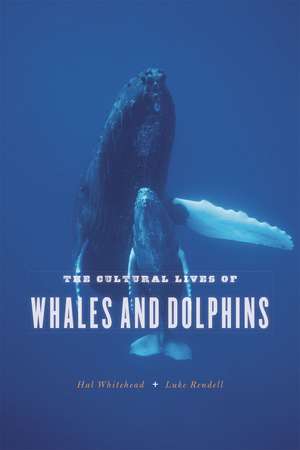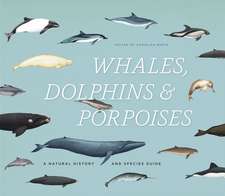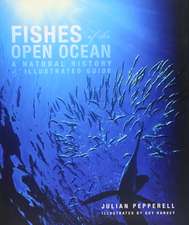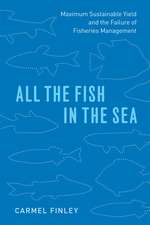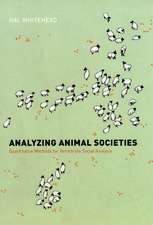The Cultural Lives of Whales and Dolphins: Emersion: Emergent Village resources for communities of faith
Autor Hal Whitehead, Luke Rendellen Limba Engleză Paperback – 30 oct 2015
In the songs and bubble feeding of humpback whales; in young killer whales learning to knock a seal from an ice floe in the same way their mother does; and in the use of sea sponges by the dolphins of Shark Bay, Australia, to protect their beaks while foraging for fish, we find clear examples of the transmission of information among cetaceans. Just as human cultures pass on languages and turns of phrase, tastes in food (and in how it is acquired), and modes of dress, could whales and dolphins have developed a culture of their very own?
Unequivocally: yes. In The Cultural Lives of Whales and Dolphins, cetacean biologists Hal Whitehead, who has spent much of his life on the ocean trying to understand whales, and Luke Rendell, whose research focuses on the evolution of social learning, open an astounding porthole onto the fascinating culture beneath the waves. As Whitehead and Rendell show, cetacean culture and its transmission are shaped by a blend of adaptations, innate sociality, and the unique environment in which whales and dolphins live: a watery world in which a hundred-and-fifty-ton blue whale can move with utter grace, and where the vertical expanse is as vital, and almost as vast, as the horizontal.
Drawing on their own research as well as a scientific literature as immense as the sea—including evolutionary biology, animal behavior, ecology, anthropology, psychology, and neuroscience—Whitehead and Rendell dive into realms both humbling and enlightening as they seek to define what cetacean culture is, why it exists, and what it means for the future of whales and dolphins. And, ultimately, what it means for our future, as well.
Unequivocally: yes. In The Cultural Lives of Whales and Dolphins, cetacean biologists Hal Whitehead, who has spent much of his life on the ocean trying to understand whales, and Luke Rendell, whose research focuses on the evolution of social learning, open an astounding porthole onto the fascinating culture beneath the waves. As Whitehead and Rendell show, cetacean culture and its transmission are shaped by a blend of adaptations, innate sociality, and the unique environment in which whales and dolphins live: a watery world in which a hundred-and-fifty-ton blue whale can move with utter grace, and where the vertical expanse is as vital, and almost as vast, as the horizontal.
Drawing on their own research as well as a scientific literature as immense as the sea—including evolutionary biology, animal behavior, ecology, anthropology, psychology, and neuroscience—Whitehead and Rendell dive into realms both humbling and enlightening as they seek to define what cetacean culture is, why it exists, and what it means for the future of whales and dolphins. And, ultimately, what it means for our future, as well.
Din seria Emersion: Emergent Village resources for communities of faith
-
 Preț: 144.99 lei
Preț: 144.99 lei - 9%
 Preț: 352.50 lei
Preț: 352.50 lei -
 Preț: 307.55 lei
Preț: 307.55 lei -
 Preț: 146.50 lei
Preț: 146.50 lei - 8%
 Preț: 360.28 lei
Preț: 360.28 lei -
 Preț: 185.37 lei
Preț: 185.37 lei -
 Preț: 183.89 lei
Preț: 183.89 lei -
 Preț: 115.53 lei
Preț: 115.53 lei - 6%
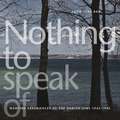 Preț: 324.95 lei
Preț: 324.95 lei - 8%
 Preț: 346.31 lei
Preț: 346.31 lei -
 Preț: 67.35 lei
Preț: 67.35 lei -
 Preț: 101.43 lei
Preț: 101.43 lei -
 Preț: 216.90 lei
Preț: 216.90 lei - 18%
 Preț: 2261.34 lei
Preț: 2261.34 lei -
 Preț: 215.52 lei
Preț: 215.52 lei -
 Preț: 167.85 lei
Preț: 167.85 lei -
 Preț: 179.04 lei
Preț: 179.04 lei - 12%
 Preț: 290.56 lei
Preț: 290.56 lei -
 Preț: 156.84 lei
Preț: 156.84 lei - 9%
 Preț: 353.24 lei
Preț: 353.24 lei -
 Preț: 186.09 lei
Preț: 186.09 lei -
 Preț: 176.49 lei
Preț: 176.49 lei -
 Preț: 133.99 lei
Preț: 133.99 lei -
 Preț: 144.80 lei
Preț: 144.80 lei - 18%
 Preț: 348.59 lei
Preț: 348.59 lei -
 Preț: 138.26 lei
Preț: 138.26 lei -
 Preț: 163.52 lei
Preț: 163.52 lei - 18%
 Preț: 502.35 lei
Preț: 502.35 lei -
 Preț: 182.98 lei
Preț: 182.98 lei -
 Preț: 208.55 lei
Preț: 208.55 lei -
 Preț: 279.55 lei
Preț: 279.55 lei - 8%
 Preț: 563.24 lei
Preț: 563.24 lei -
 Preț: 116.07 lei
Preț: 116.07 lei -
 Preț: 120.81 lei
Preț: 120.81 lei -
 Preț: 160.63 lei
Preț: 160.63 lei - 9%
 Preț: 352.77 lei
Preț: 352.77 lei -
 Preț: 106.35 lei
Preț: 106.35 lei -
 Preț: 273.93 lei
Preț: 273.93 lei -
 Preț: 316.40 lei
Preț: 316.40 lei -
 Preț: 548.71 lei
Preț: 548.71 lei -
 Preț: 138.81 lei
Preț: 138.81 lei -
 Preț: 152.25 lei
Preț: 152.25 lei -
 Preț: 229.92 lei
Preț: 229.92 lei -
 Preț: 94.22 lei
Preț: 94.22 lei -
 Preț: 203.53 lei
Preț: 203.53 lei - 8%
 Preț: 311.68 lei
Preț: 311.68 lei -
 Preț: 208.32 lei
Preț: 208.32 lei -
 Preț: 302.76 lei
Preț: 302.76 lei - 8%
 Preț: 565.01 lei
Preț: 565.01 lei
Preț: 145.41 lei
Nou
Puncte Express: 218
Preț estimativ în valută:
27.82€ • 30.35$ • 23.46£
27.82€ • 30.35$ • 23.46£
Carte disponibilă
Livrare economică 03-17 aprilie
Livrare express 19-25 martie pentru 91.40 lei
Preluare comenzi: 021 569.72.76
Specificații
ISBN-13: 9780226325927
ISBN-10: 022632592X
Pagini: 432
Ilustrații: 15 color plates, 5 line drawings, 5 tables
Dimensiuni: 152 x 229 x 28 mm
Greutate: 0.59 kg
Editura: University of Chicago Press
Colecția University of Chicago Press
Seria Emersion: Emergent Village resources for communities of faith
ISBN-10: 022632592X
Pagini: 432
Ilustrații: 15 color plates, 5 line drawings, 5 tables
Dimensiuni: 152 x 229 x 28 mm
Greutate: 0.59 kg
Editura: University of Chicago Press
Colecția University of Chicago Press
Seria Emersion: Emergent Village resources for communities of faith
Notă biografică
Hal Whitehead is a University Research Professor in the Department of Biology at Dalhousie University in Halifax, Nova Scotia, and the author of Sperm Whales: Social Evolution in the Ocean and Analyzing Animal Societies, both published by the University of Chicago Press. Supported by the Marine Alliance for Science and Technology, Luke Rendell is a lecturer in biology at the Sea Mammal Research Unit and the Centre for Social Learning and Cognitive Evolution of the University of St Andrews, Scotland.
Cuprins
Chapter 1
Culture in the Ocean?
Chapter 2
Culture?
Chapter 3
Mammals of the Ocean
Chapter 4
Song of the Whale
Chapter 5
What the Dolphins Do
Chapter 6
Mother Cultures of the Large Toothed Whales
Chapter 7
How Do They Do It?
Chapter 8
Is This Evidence for Culture?
Chapter 9
How the Whales Got Culture
Chapter 10
Whale Culture and Whale Genes
Chapter 11
The Implications of Culture: Ecosystems, Individuals, Stupidity, and Conservation
Chapter 12
The Cultural Whales: How We See Them and How We Treat Them
This Book Came From and Is Built On . . .
Notes
Bibliography
Index
Culture in the Ocean?
Chapter 2
Culture?
Chapter 3
Mammals of the Ocean
Chapter 4
Song of the Whale
Chapter 5
What the Dolphins Do
Chapter 6
Mother Cultures of the Large Toothed Whales
Chapter 7
How Do They Do It?
Chapter 8
Is This Evidence for Culture?
Chapter 9
How the Whales Got Culture
Chapter 10
Whale Culture and Whale Genes
Chapter 11
The Implications of Culture: Ecosystems, Individuals, Stupidity, and Conservation
Chapter 12
The Cultural Whales: How We See Them and How We Treat Them
This Book Came From and Is Built On . . .
Notes
Bibliography
Index
Recenzii
“In every generation, there are some scientists who transcend the strictures of their disciplines, who decline to be confined by ordinary thinking. Whitehead and Rendell are two such people, for our own time. Perhaps it is something to do with the enigmatic beauty of the animals they study. Or perhaps their own brains are better evolved than the rest of ours. Whatever the reason, this book is an astonishing, unconstrained exploration of the nature and practice of cetacean culture. Placing it side by side with human culture, the authors show that the expression of ideas is not limited to humans or primates. Exciting, witty, with its finger—or should that be flipper?—ever on the pulse, wearing its profundity with a wonderful lightness of touch, The Cultural Lives of Whales and Dolphins is a revolutionary book. Transcending the notion of a ‘science’ book, it contains explosive new concepts for our understanding not only of whales, our watery cousins, but of our own selves, too.”
“Whitehead and Rendell tie together decades of research and observations of cetacean behavior, add in other compelling examples of culture in animals, and relate this to what we think of as culture. This work is unique, and I plan to quote parts of it for years to come. For anyone with an interest in how whales and dolphins live their lives, this is a must read.”
“An amazing book. . . . Outstanding, not just because it regales the reader with the many insights the pair have gained from their decades of research, patiently watching whale behavior, but also because it challenges us to consider those ever-present cultural forces that shape us all into modern human beings, similar and unique as we all are.”
“There are few environments that are more hostile and present more of a challenge to mammals than the ocean. This is precisely why, Whitehead and Rendell argue in their new book The Cultural Lives of Whales and Dolphins, just like us, knowledge is also a vital currency for these marine mammals. . . . At times it is a humorous journey through aspects of human behaviour and ‘decision making,’ resulting as it does from cultural pressures. But this apparent irreverence is not without deeper meaning and strong intent. . . . They provide some sobering insights into those ubiquitous cultural forces that shape us all into modern human beings and at times can leave you reeling with questions about your own free will. This is an exceptional book; it will no doubt irritate some anthropologist who believe that culture is the domain of humans alone; it may even rile some theologians; but far, far more importantly it will help to bridge the gap between humans and other species, speaking as it does to the evolutionary continuum and demonstrating with sound scientific evidence that there are some extraordinary non-human cultures being played out in the natural world. . . . This very book can be considered itself an experiment in social transmission. The question is, will we get the message?”
“Humans, though arguably the masters of culture, are not the only species that has it. Dolphins, as the authors reveal, create signature whistles and can mimic and remember others’ even twenty years later. They can also learn tail-walking in captivity and then teach it in the wild. Whales possess dialects that change in a way that can only be explained as the result of learning. And both whales and dolphins behave in ‘obviously altruistic’ ways. Dolphins and whales have saved humans stranded at sea, and humpback whales have been observed saving seals from killer whales. . . . Whitehead and Rendell deeply analyze the importance of culture to evolution, exploring what can be learned from animals that are perhaps more advanced than humans before pushing ‘off to sea again, where there is still so much to learn.’”
“I’ve been anxiously waiting for The Cultural Lives of Whales and Dolphins to arrive and consumed it last night and early this morning. (It was far better than my coffee!) Of course, I look forward to rereading it many times for it is that good. . . . Scholarly yet easy to read, and incredibly well referenced. . . . The authors provide ample examples of nonhuman culture . . . and also discuss what we know about topics such as the moral lives of animals and others that are making people think twice about just whom other animals are and what we know about their fascinating and highly evolved cognitive and emotional lives. . . . The skeptics, if any still linger, will have to offer more than something like their dismissive claim, ‘Oh, whales and dolphins and other animals are only acting as if they have culture, but they don’t.’ They clearly do. . . . An outstanding book. . . . The Cultural Lives of Whales and Dolphins is destined to become a classic.”
“Whitehead and Rendell cover cetacean culture from its earliest beginnings to the present day. The authors include research they completed as well as some from other scientists to discover that cetaceans communicate by adapting to the unique environment in which they live, investigating the broad concepts of culture, community, and social learning before applying them to whales and dolphins. Also discussed are the implications of the creatures’ culture as it relates to ecosystems and conservation and the future of the cetacean world, including what it bodes for humans. . . . A captivating book for readers of all levels, from curious laypeople to scientists. . . . Recommended for both undergraduate and graduate students; researchers; and scholars studying biology, zoology, and veterinary science; and anyone interested in learning about animal behavior.”
“This research round-up on cetacean culture opens with a description of one of nature’s great arias: the ‘high sweeping squeals, low swoops, barking, and ratchets’ of the humpback whale. That song, argue cetacean biologists Hal Whitehead and Luke Rendell, is the best evidence of culture in this intriguing family, because it is an indicator of social learning in action—communal singing evolves over time and changes radically over individuals’ lifetimes. Fascinating findings litter this sober treatise, from sperm whales snacking off fishing longlines to the ‘Star Wars vocalisation’ of dwarf minkes.”
“Whitehead and Rendell suggest that for tens of millions of years—until the rise of modern humans—the most sophisticated cultures on Earth were those of whales. . . . If culture is as important to whales as it appears, then conservationists will need to protect not just their genetic diversity but their cultural diversity as well. All this speculation is underlain by a wealth of biological detail, all carefully annotated, making this book a valuable—and usually very readable—resource for anyone interested in cetacean behaviour.”
“Noted . . . . Explores the communication techniques and sense of culture developed by different species of whales.”
“Provocative, brilliant. . . . The final chapters of this groundbreaking and beautifully produced book pose stunning questions, and tease out outrageous answers. If culture exists in cetaceans, have they developed an equivalent moral sense of right and wrong? Yes, say the authors. Whales and dolphins observe rituals of the dead and exhibit grief. Could they, then, express spiritual sentiment, founded on values and belief—even a sense of religion? Perhaps. All this only underlines a pressing need to address the notion of non-human rights for such animals. . . . Whitehead and Rendell write with wit and good humour as they take on their critics.”
“Convincingly dig[s] into critiques and alternative explanations for whale and dolphin behavior, providing a detailed look at the debate over whether culture exists among the animals. Whitehead and Rendell pack the text with references, keeping the book scrupulously rooted in scientific evidence. . . . For readers who are curious about whales and dolphins in the wild, the book offers a thorough grounding.”
“Written with an absolutely marvelous inquisitive brio. Whitehead and Rendell don’t just bring two lifetimes of experience with sea life and animal cognition to their task—they also write up the fruits of that experience with captivating energy. . . . They display an open-mindedness on their chosen subject that’s admirable and rare. . . . The book’s insights fly at the reader with a speed and frequency I haven’t seen since Richard Dawkins’ The Ancestor’s Tale, and all this fascinating information derives from what Whitehead and Rendell are the first to admit is a necessarily limited sampling. . . . The Cultural Lives of Whales and Dolphins might be only a glimpse into the world of its subjects, but it’s one of the best glimpses popular science has yet given us. It’s invigorating, revelatory reading.”
“In this revolutionary book, destined to become a classic, the authors show that ‘culture’ is information that flows between animals; it is socially learned and shared within a community. . . . The book gives readers a captivating insight into the various ways that dolphins communicate with each other using a wide variety of signals, such as doing upside-down lob tails—slamming the top of their flukes onto the surface of the water—which appears to signal the dolphins’ arrival at a particular destination. . . . This social learning, memory, and communication are a clear example of information flow and culture. I encourage you to embark on a fascinating journey of discovery and a beautiful insight into the world of whales and dolphins: without doubt, some of the most intelligent, beautiful, and remarkable creatures to inhabit this earth.”
“Recent publication of interest. . . . To Whitehead and Rendell, culture is ‘a flow of information moving from animal to animal’ and, thus, communication among whales and dolphins means they have a culture. This book addresses the questions of whether whales and dolphins really have cultures, what evidence indicates the presence of culture, what adaptations led to their cultures, what effect their cultures will have on the ecology of the oceans and conservation, and, finally, how the cultures affect these animals’ treatments by humans.”
“The anthropologist Joe Henrich . . . showed how cultural differences shape cognitive differences in people. A new book, The Cultural Lives of Whales and Dolphins, by the biologists Whitehead and Rendell, calls out researchers like Henrich for treating culture as uniquely human. Their own decades of research indicates social learning among animals. For example, they note, whale pods in different parts of the world have developed regional singing styles.”
“Whitehead and Rendell mesh their own research from several decades of cetacean studies with investigation and theory from the biological, physical, and social sciences. This wealth of experience is distilled into a simple thesis: whale and dolphin culture exists, and it matters—for the survival of cetacean species, for the management of marine ecosystems, and for the way we conceive of human culture. Whitehead and Rendell’s work is ambitious in scope, yet careful in its presentation. . . . They define key terms precisely, and employ them consistently. They are also meticulous in separating evidence from interpretation. . . . In its evocative and richly annotated examination of the evolutionary interplay between environment and social learning, The Cultural Lives of Whales and Dolphins makes a compelling case that we can learn much more about cetaceans and about human cultures by exploring what we have in common—such as a predisposition to learn from our grandmothers—rather than by insisting on what sets us apart.”
“A stunning account that enriches our understanding of cetacean behaviour and complicates in profound ways the claims of human exceptionalism. . . . The authors present knowledge hard-won from their own decades of studying sperm whales, analyse comparable material from other long-term cetacean research, and offer informed speculation where the data still fall short of hard conclusions. The book represents a gorgeously choreographed dance that depends on balancing what we know for certain about the cultures of whales and dolphins with what seems highly probable but must still be considered speculative. . . . The Cultural Lives of Whales and Dolphins is an illuminating look at the lives of cetaceans who think, who feel, and whose lives are profoundly communal. There’s no mysticism here, but there is mystery.”
“These days I’m very seldom excited by a trade non-fiction title, roaring as most of them are down the middle lane of the same motorway, to the degree I’m excited by the original and vital byways that university presses are exploring for the general reader. In natural history and popular science, alone, for instance: Hal Whitehead and Luke Rendell’s amazing book The Cultural Lives of Whales and Dolphins or Brooke Borel’s history of the bedbug, Infested, or Caitlin O’Connell’s book on pachyderm behaviour, Elephant Don, or Christian Sardet’s gorgeous book Plankton? All are published by the University of Chicago.”
“Considers wider implications, including contributions to the field of gene-culture coevolution, applications to conservation, and how humans perceive and treat whales and dolphins. To attempt any of these aims would make a book noteworthy in the field; to do all of them makes it a must read. . . . Was I convinced by the evidence? In a way, that question misses the point of this book. Certainly, I became engaged in the ongoing discussion, so much so that I found it hard to write this review (and you would be correct in thinking that this sounds like an excuse for missed deadlines, but it also happens to be true). . . . Whales and dolphins could not wish for better advocates than the authors—this book will make readers think, and that might just be enough to move human culture from treating our oceans and their inhabitants slightly less badly to actively treating them better.”
“Revolutionary.”
“Over the past few years, the most controversial question in animal cognition has not been whether animals have thoughts and feeling as individuals but whether a few species collectively create something that could reasonably be called a culture. . . . For a long-lived, social species, having a culture is an environmental advantage, since a collective knowledge means individuals can do things they would never be able to learn in their own lifetimes. Whitehead and Rendell are distinguished marine scientists. They provide [an] even balance between science and storytelling. . . . Their book is a profound exploration of animal cognition’s cutting edge.”
“The idea that our oceans teem with cultural animals—and have for millions of years—is the central conclusion of a new book by two whale scientists. And it’s a convincing one. . . . Rendell and Whitehead stake out provocative positions—for example, that language isn’t necessary for culture to exist—that ensure cross-talk from anthropologists who insist that language and symbolic meaning-making sit at the core of culture.”
"This extremely well-written book is an exemplary attempt at peacemaking in the so-called culture wars. Whitehead and Rendell provide a clear historical perspective on the study of animal culture, up-to-date literature reviews on behavioral innovations and traditions in non-human animals, comprehensive classifications of social mechanisms (i.e., the building blocks of culture), and careful critical analyses of the similarities and differences between human and animal cultures. The title of the book does not give a full appreciation of the long-term and fascinating research by Whitehead and Rendell. The authors’ insight and open-mindedness allow them to successfully address key definitional issues (e.g., ethnic markers, social norms); discuss the strengths and weaknesses of several methodological approaches to studying culture (e.g., method of elimination, experimental designs); link brain size, cognition, communication, and sociability; and explain the (mal)adaptive consequences and evolutionary implications of cultural transmission (e.g., gene-culture coevolution). . . . Spiced up with excellent quotations, this book will resonate well with a broad readership, from cetacean lovers to students of animal behavior to the general public. . . . Essential. All readers."
“For those captivated by whales and dolphins, whether in reality or by an idea, Whitehead and Rendell’s impressive book brings their world vividly to life, with a blend of anecdote, scientific research, and personal reflection. . . . The call to action is admirable. . . . Infectious.”
"A comprehensive academic work by researchers who have devoted their careers to studying sperm and killer whales. . . . The discovery of nonhuman societies composed of highly intelligent, social, empathetic individuals possessing sophisticated communication systems will force us to reformulate many questions. We have long asked whether we are alone in the universe. But clearly we are not alone on earth. The evolution of intelligence, of empathy and complex societies, is surely more likely than we have hitherto considered."
“Five stars. . . . This exploration covers an astonishing body of knowledge and thought. . . . Well worth your probable multi-day read, this work could be the core of a course of study. What is immediately apparent is the sheer carefulness and completeness of the authors’ exposition.”
“[One of ‘The Best Books of 2015: Nature!’]. . . . The quietly revolutionary angle of this fantastic book is hinted right there in the title: culture—not the behavior but the culture of non-humans. The subject is huge and in very large part untenable, since whales and dolphins spend virtually all of their lives outside the range of human observation, let alone human measurement. But the attempts this book makes are very, very much worth making.”
“At the least, the reader has an up-to-date, authoritative account of advances in studying the behavior of a fascinating mammalian order. Readers with enquiring minds may question earlier underestimations of these creatures that seem so alien to us terrestrial bipeds. Even if only half of what the authors report turns out to be supported by accumulating evidence, then we must acknowledge that culture comes in diverse forms, just like other natural processes, such as digestion, locomotion, or cognition. Moreover, these findings also have a real-world relevance, because these magnificent creatures must be preserved, not just for their biodiversity but also for their cultural diversity. What a shame it would be if we exterminated them before we fathomed their secrets.”
“Animals think, therefore: The inner lives of animals are hard to study—but there is evidence that they may be a lot richer than science once thought.”
“The Cultural Lives of Whales and Dolphins is well written, carefully edited, and accessible to a wide readership without sacrificing authoritativeness. The backmatter with notes and bibliography alone extends to 92 pages and there is a 19-page double-column index. The book could serve as reading material in biology or conservation courses, or a delightful provocation in anthropology or psychology courses. It can be anticipated that new editions will be able to chart the further implications of culture and add to the body of evidence. Those of us studying whales are fortunate to have seen our studies go from zero to an extraordinary flowering of data and research results uncovering not just the highly diverse behaviour, life history, and population biology but now enriching ourselves with the cultural lives of wild whales and dolphins.”
“The best book I read in 2016. . . . Significant research, quiet global following, and a depth of thought that deserves serious regard.”
“Whitehead and Rendell have written a dense, rigorously argued, and witty treatise about cetacean culture that manages to be both scientifically important and accessible to nonexperts who have genuine curiosity and are willing to work hard. . . . [They] argue both skeptically and rigorously for instances of cultural transmission in marine mammals, often using illuminating comparisons to birds. Defining culture as ‘information or behavior—shared within a community—which is acquired . . . through some form of social learning,’ they proceed to sift through the evidence that whales and dolphins demonstrate cultural learning. Despite their rigor and skepticism, they find quite a lot. After all, they conclude, staying alive in the ocean is tough, and these mammals use the group as an important mechanism of survival.”
